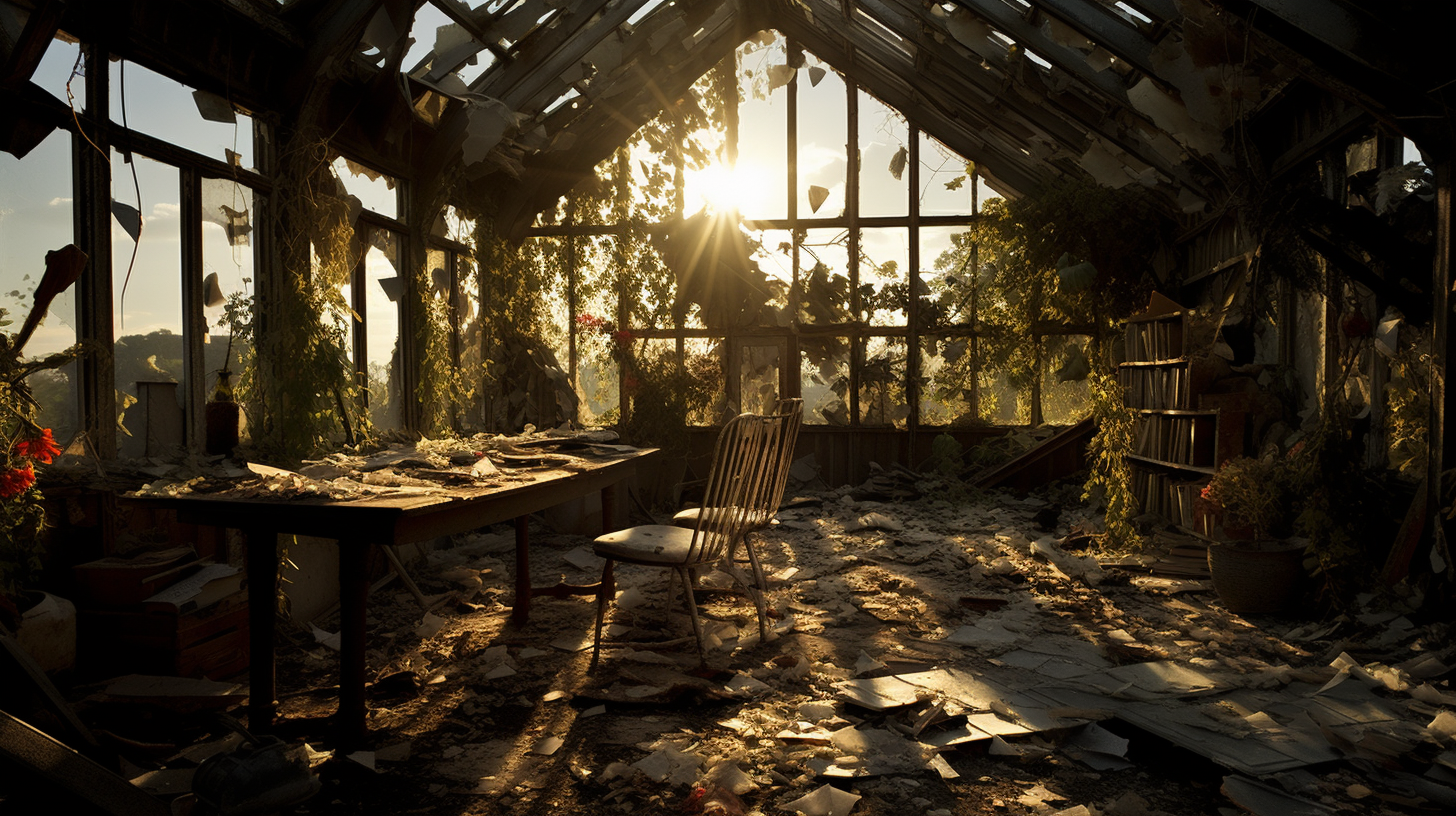In a world draped in perpetual shadows, the quest for light has turned into the pursuit of a once ubiquitous treasure—a relic, if you may—the warmth and brilliance of sunlight. It’s an unspoken journey that embraces the remnants of a brighter past, a world where the sun kissed our skins and fueled our lives with its relentless energy. But here we are, scavenging through the remains of a Green Dystopia, where solar panels are not just devices, but heirlooms handed down through generations, encapsulating stories of survival against the backdrop of relentless environmental decay.
While the masses dwell in gloom, unveiling the power of the sun has become a clandestine art. The “Solar Scavengers”, once celebrated pioneers of light, now take on the role of guardians. Endeavoring to salvage the scraps of photovoltaic history, they piece together complex mosaics of fractured solar cells—each fragment a whisper from the past—attempting to breach the oppressive darkness.
These solar heirlooms are steeped in the dichotomy of our times: relics from an age of abundance, yet vital lifelines in our current state of deprivation. They symbolize the collective memory of a time when the sun was a friend rather than a foe. But those who inherit them are plagued by the cruel irony that even as the world scorches beneath an inflamed sun, they are shielded from its life-giving glory by a once protective but now suffocating atmosphere.
The legacy of sunlight also perpetuates a moral dialogue in this society split asunder. On one hand, the solar heirlooms are evidence of human resiliency and adaptation in the face of an environmental apocalypse. Their presence is a testament to our capacity to treasure and rise from the ashes of calamity. On the other, they represent a cause for conflict, coveted artefacts in a black market that thrives on scarcity and desperation.
One can’t help but ruminate on the poetic struggle inherent in the efforts to harness and protect these remnants of sunlight. In a paradoxical twist, sophisticates of the solar underworld now drape their heirlooms beneath protective covers during the scorching days, only to unveil them in brief, defiant acts of illumination as night falls. These ritualistic moments, when heirloom panels absorb the moon’s reflected solar glow, become cathartic celebrations of light—ephemeral revivals of a lost world, oral histories illuminated under a haunting, borrowed light.
We are, however, left to ponder—is there a forward path from this? This inheritance of solar lineage, does it end with the practical need for light, or could it be a beacon drawing us towards a semblance of reconstruction or a recalibration towards the true value of our solar heritage? This persistent cycle of light and darkness challenges us to consider whether in the soft glow of the old sun, through the refractions of these solar heirlooms, we might glimpse some sense of a way forward, a piece of wisdom to pierce through the bleakness of our era.
The solar heirlooms are thus dual in nature: salvaged keys to everyday survival, as well as heirlooms of a not-so-distant past where the sun’s loss was unimaginable. They encapsulate both the ingenuity and folly of mankind—a bridge spanning across the chasm of time, asking us to reflect on what was, what is, and what could have been if the sun’s legacy had been handled with care.
